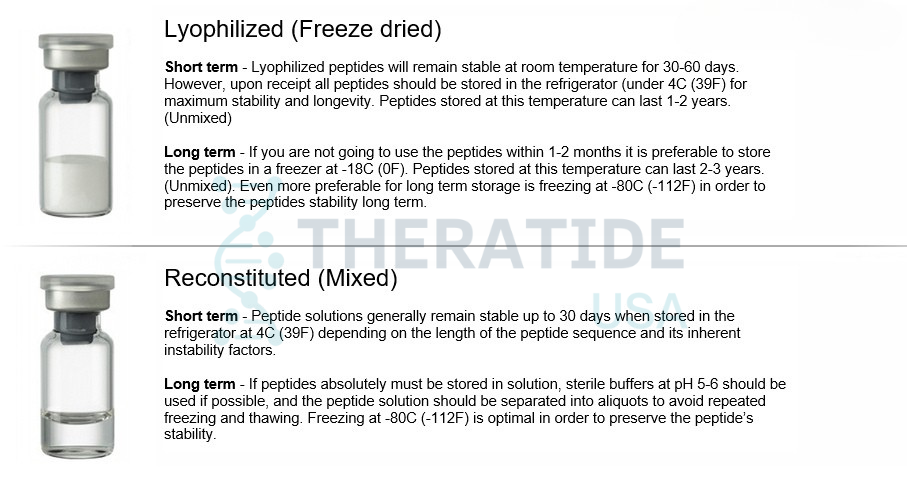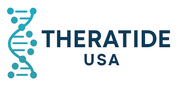Peptide Storage
ALL ARTICLES AND PRODUCT INFORMATION PROVIDED ON THIS WEBSITE ARE FOR INFORMATIONAL AND EDUCATIONAL PURPOSES ONLY. The products offered on this website are furnished for in-vitro studies only. In-vitro studies (Latin: in glass) are performed outside of the body. These products are not medicines or drugs and have not been approved by the FDA to prevent, treat or cure any medical condition, ailment or disease. Bodily introduction of any kind into humans or animals is strictly forbidden by law.
Best Practices For Storing Peptides
To preserve the integrity of laboratory results, proper storage of peptides is essential. Correct storage practices can maintain peptides for years and guard against contamination, oxidation, and degradation that may render your peptides—and therefore experiments—useless. While some peptides are more susceptible to degradation than others, knowing and implementing the best practices for peptide storage can greatly lengthen their stability and integrity regardless of composition.
Once peptides have been received, it is imperative that they are kept cold and away from light. If the peptides will be used immediately, or in the next several days, weeks, or months, short-term refrigeration under 4°C (39°F) is generally acceptable. Lyophilized peptides are usually stable at room temperatures for several weeks or more, so if they will be utilized within weeks or months such storage is typically adequate.
However, for longer term storage (several months to years) it is more preferable to store peptides in a freezer at -80°C (-112°F). When storing peptides for months or even years, freezing is optimal in order to preserve the peptide’s stability.
Additionally, it is important to avoid repeated freeze-thaw cycles. This can increase the peptide’s susceptibility to degradation. Also, frost-free freezers should be avoided to store peptides, as temperatures can fluctuate widely during defrosting cycles.

Preventing Oxidation and Moisture Contamination
It is imperative to avoid contaminating peptides with air and moisture. Moisture contamination is especially prone to occur when opening a peptide vial immediately after removing it from the freezer. To prevent condensation, allow the vial to reach room temperature before opening.
Minimize exposure to air by keeping the vial closed whenever possible. After removing the required amount, reseal the container under a dry, inert gas (such as nitrogen or argon) to minimize oxidation. Peptides containing cysteine (C), methionine (M), and tryptophan (W) are particularly prone to oxidation.
Because frequent thawing and refreezing and air exposure degrade peptides, many researchers prefer to aliquot peptides into separate vials to match each experiment’s needs.
Storing Peptides in Solution
Peptides in solution have a much shorter shelf life than lyophilized peptides and are prone to bacterial degradation. Peptides containing Cys, Met, Trp, Asp, Gln, and N-terminal Glu degrade especially quickly.
If peptides must be stored in solution, use sterile buffers at pH 5–6 and divide the solution into aliquots to avoid repeated freeze-thawing. Peptide solutions are generally stable up to 30 days when refrigerated at 4°C (39°F), but unstable peptides should be kept frozen when not in use.
Peptide Storage Containers
Containers should be clean, structurally sound, and chemically resistant. Both glass and plastic vials can be used. Polystyrene vials are clear but not chemically resistant, while polypropylene vials are translucent but chemically resistant.
High-quality glass vials provide both clarity and chemical resistance. Peptides may ship in plastic to avoid breakage but can be transferred to glass if preferred.
Peptide Storage Guidelines: General Tips
- Store peptides in a cold, dry, dark place.
- Avoid repeated freezing and thawing.
- Minimize exposure to air.
- Avoid light exposure.
- Avoid long-term storage in solution.
- Aliquot peptides according to experimental requirements.
